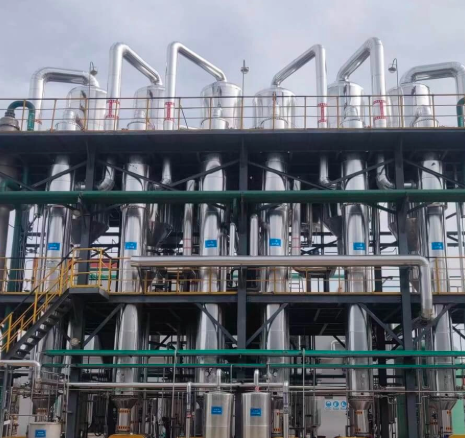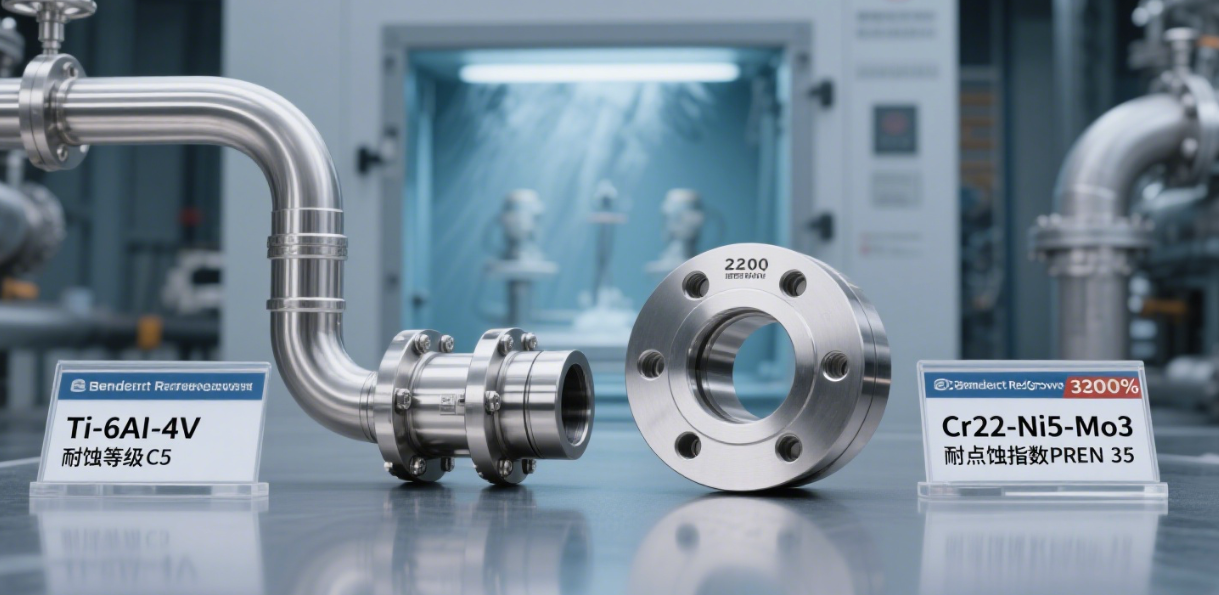Views: 0 Author: Site Editor Publish Time: 2025-07-21 Origin: Site









As industries worldwide face increasing energy costs, environmental pressures, and the need for sustainable operations, optimizing energy efficiency within processing technologies is essential. Multi-effect Evaporation & Crystallization has become a pivotal technology for industries seeking effective liquid concentration, salt and resource recovery, and wastewater reduction while minimizing energy consumption and operational costs.
ZheJiang VNOR Environmental Protection Technology Co., Ltd. specializes in Multi-effect Evaporation & Crystallization, providing high-efficiency, customized solutions that enable manufacturers in chemical, pharmaceutical, lithium battery, and wastewater treatment sectors to achieve sustainable production while significantly reducing their operational expenses. This comprehensive guide explains the working principles, energy-saving mechanisms, practical strategies, technical comparisons, and emerging trends related to Multi-effect Evaporation & Crystallization, empowering industries to operate efficiently while leveraging this technology for sustainable growth.
Multi-effect Evaporation & Crystallization is a thermal separation and concentration technology where multiple evaporation stages are integrated in series, each operating at progressively lower pressures and temperatures. Steam introduced in the first effect heats the liquid feed, causing it to evaporate, and the vapor generated is reused as the heating source for the next effect.
During the Multi-effect Evaporation & Crystallization process, as the solution becomes progressively concentrated, it reaches a supersaturation state, leading to crystal formation. The crystals are then separated, allowing the recovery of valuable salts and minerals while producing clean water for reuse.
This integrated approach enables:
Efficient liquid concentration with reduced steam consumption.
Salt and mineral recovery to enhance resource reuse.
Zero Liquid Discharge (ZLD) or near-zero discharge by minimizing wastewater.
Multi-effect Evaporation & Crystallization typically accounts for significant energy usage in industrial processing, with steam and electricity forming a large part of operational expenditures.
By enhancing energy efficiency in Multi-effect Evaporation & Crystallization, industries can:
Reduce steam consumption by 60–80% compared to single-effect evaporation systems.
Lower electricity costs through optimized system operation.
Decrease cooling water requirements.
Reduce greenhouse gas emissions, aligning with ESG goals.
Increase competitiveness by lowering production costs while maintaining product quality.

Multi-effect Evaporation & Crystallization leverages the principle of vapor reuse to achieve significant energy savings. In this process, the vapor generated in one effect is used as the heating medium for the next effect. This cascading reuse of vapor ensures that the latent heat of vaporization is utilized multiple times, thereby dramatically reducing the need for fresh steam. For instance, in a three-effect evaporator, the vapor from the first effect is used to heat the second effect, and the vapor from the second effect is used to heat the third effect. This sequential reuse of energy minimizes the overall energy input required for the evaporation process, making it highly efficient compared to single-effect systems.
One of the key strategies in Multi-effect Evaporation & Crystallization is the optimization of process pressures. By operating each effect at progressively lower pressures, the boiling point of the solution is reduced. This reduction in boiling point means that less energy is required to achieve evaporation, while still maintaining effective concentration of the solution. Lower operating pressures also help in reducing the risk of thermal degradation of heat-sensitive materials, ensuring product quality and process efficiency. The careful control of pressure differentials between effects is crucial for maintaining the desired temperature gradients and maximizing energy efficiency.
The efficiency of Multi-effect Evaporation & Crystallization systems is significantly enhanced by the use of advanced heat exchangers. These heat exchangers are designed to maximize thermal transfer efficiency while minimizing the risk of fouling. High-efficiency heat exchangers ensure that the heat transfer surfaces remain clean and effective, allowing for stable heat recovery and consistent performance. By reducing fouling, the system maintains optimal heat transfer rates, which in turn lowers energy consumption. Modern heat exchangers often incorporate advanced materials and coatings that further improve their performance and longevity, contributing to the overall energy efficiency of the process.
Automation plays a crucial role in optimizing the energy efficiency of Multi-effect Evaporation & Crystallization systems. Automated monitoring and control systems enable precise regulation of feed rates, pressures, and temperatures throughout the process. By maintaining optimal operating conditions, these systems ensure that energy is used efficiently and consistently. Automated controls can also detect and correct deviations in real-time, preventing energy waste and ensuring high product quality. Advanced sensors and control algorithms provide continuous feedback, allowing for fine-tuning of the process parameters to achieve maximum energy savings and operational efficiency.
Innovative approaches to energy efficiency in Multi-effect Evaporation & Crystallization include the integration of renewable energy sources. Solar thermal energy, for example, can be used to preheat the feed or generate steam, thereby reducing the reliance on conventional energy sources. Additionally, waste heat recovery systems can capture and reuse excess heat from other industrial processes, further minimizing the thermal load required for evaporation. This integration not only reduces energy costs but also enhances the sustainability of the process, aligning with global efforts to reduce carbon emissions.
Regular maintenance is essential for maintaining the energy efficiency of Multi-effect Evaporation & Crystallization systems. Routine cleaning of heat exchangers and other surfaces helps to prevent fouling and scaling, which can significantly reduce heat transfer efficiency. By keeping the system components in optimal condition, maintenance ensures that the heat exchangers and other critical parts operate at peak performance. This not only reduces energy consumption but also extends the lifespan of the equipment, providing long-term cost savings.
Optimizing the operating parameters of Multi-effect Evaporation & Crystallization systems is a key strategy for enhancing energy efficiency. By carefully adjusting feed rates, temperatures, and pressures using automated control systems, the process can be fine-tuned to minimize energy waste. Advanced process control algorithms can analyze real-time data to identify the most efficient operating conditions and make adjustments accordingly. This approach ensures that the system operates at its most energy-efficient state, while still delivering high-quality products.
Incorporating Mechanical Vapor Recompression (MVR) technology into Multi-effect Evaporation & Crystallization systems can further enhance energy efficiency. MVR involves compressing the vapor generated during evaporation to increase its temperature and pressure, making it suitable for reuse as a heating medium. This technology allows for even greater reuse of vapor, reducing the need for fresh steam and lowering overall energy consumption. The integration of MVR with multi-effect systems combines the benefits of both technologies, providing a highly efficient and sustainable solution.
The use of Variable Frequency Drives (VFDs) in Multi-effect Evaporation & Crystallization systems offers another means of optimizing energy use. VFDs allow for precise control over the speed of pumps and blowers, enabling the system to adjust to variable loads more efficiently. By matching the energy input to the actual process requirements, VFDs help to minimize energy waste and reduce operational costs. This technology is particularly beneficial in systems where the load varies significantly, providing a flexible and energy-efficient solution.
Integrating heat recovery mechanisms into Multi-effect Evaporation & Crystallization systems can significantly reduce energy consumption. By capturing and reusing waste heat from other processes, the thermal load required for evaporation can be substantially reduced. For example, waste heat from cooling systems or other industrial processes can be used to preheat the feed entering the evaporator. This approach not only saves energy but also enhances the overall thermal efficiency of the industrial process, contributing to a more sustainable and cost-effective operation.
One of the most significant advancements in energy-efficient evaporation and crystallization is the integration of Mechanical Vapor Recompression (MVR) with traditional Multi-effect Evaporation & Crystallization systems. This hybrid approach maximizes the reuse of vapor, thereby reducing the need for external steam by up to 90%. By leveraging the efficiency of MVR to compress and reuse vapor, these hybrid systems achieve remarkable energy savings while maintaining the robustness and versatility of multi-effect systems. This combination is particularly beneficial for industries with high energy costs and stringent environmental regulations.
The advent of digital twin technology has revolutionized the optimization and maintenance of industrial processes, including Multi-effect Evaporation & Crystallization. By creating a virtual replica of the physical system, digital twins enable detailed simulations of operations, allowing for predictive energy optimization and early fault detection. This technology provides real-time insights into system performance, enabling operators to make data-driven decisions that enhance energy efficiency and reduce operational costs. Digital twins also facilitate virtual testing of different operating scenarios, helping to identify the most efficient configurations without disrupting production.
In the context of global sustainability initiatives, Multi-effect Evaporation & Crystallization systems are increasingly being used to support water reuse and Zero Liquid Discharge (ZLD) goals. These systems play a crucial role in industries aiming to meet their sustainability and Environmental, Social, and Governance (ESG) targets by minimizing water consumption and reducing waste discharge. By efficiently concentrating and crystallizing waste streams, these systems enable industries to recover valuable resources and reduce their environmental footprint, aligning with broader sustainability objectives.
To address the challenges posed by corrosive materials in evaporation and crystallization processes, VNOR has turned to advanced materials such as titanium and duplex stainless steel. These materials offer exceptional durability and resistance to corrosion, ensuring the longevity and reliability of the systems. The use of such high-performance materials not only enhances the system’s ability to handle aggressive chemicals but also maintains high thermal efficiency, crucial for energy savings. This material selection is particularly important for industries dealing with highly corrosive substances, where system integrity and efficiency are paramount.

A: This technology helps industries by lowering steam and energy consumption by up to 80%, reducing operational expenditures, recovering valuable salts and water for reuse, achieving Zero Liquid Discharge (ZLD) goals, and operating sustainably in line with ESG standards.
A: Industries such as chemical, pharmaceutical, lithium battery, wastewater treatment, food processing, and environmental management can benefit significantly from Multi-effect Evaporation & Crystallization. These industries often require efficient liquid concentration and resource recovery while minimizing environmental impact.
A: In Multi-effect Evaporation & Crystallization, the vapor generated in one effect is used as the heating medium for the next effect. This cascading reuse of vapor ensures that the latent heat of vaporization is utilized multiple times, dramatically reducing the need for fresh steam. For example, in a three-effect evaporator, the vapor from the first effect is used to heat the second effect, and the vapor from the second effect is used to heat the third effect.
A: Renewable energy sources such as solar thermal energy can be used to preheat the feed or generate steam, thereby reducing the reliance on conventional energy sources. Additionally, waste heat recovery systems can capture and reuse excess heat from other industrial processes, further minimizing the thermal load required for evaporation. This integration not only reduces energy costs but also enhances the sustainability of the process, aligning with global efforts to reduce carbon emissions.
Optimizing energy efficiency in Multi-effect Evaporation & Crystallization is vital for industries seeking to reduce operational costs while ensuring environmental compliance and sustainability. With advanced vapor reuse, optimized thermal design, and process automation, Multi-effect Evaporation & Crystallization is a highly efficient process that enables industries to significantly lower steam and energy consumption by up to 80%, thereby reducing operational expenditures. This technology also facilitates the recovery of valuable salts and water for reuse, helping industries achieve Zero Liquid Discharge goals and operate sustainably in line with ESG standards.
ZheJiang VNOR Environmental Protection Technology Co., Ltd. stands as a leader in delivering energy-efficient Multi-effect Evaporation & Crystallization systems that align with the latest industry demands while providing maximum cost-effectiveness and environmental stewardship. If your facility is ready to reduce operational costs and enhance sustainability, contact ZheJiang VNOR Environmental Protection Technology Co., Ltd. today to discover how Multi-effect Evaporation & Crystallization can transform your operations for a cleaner, more profitable future.